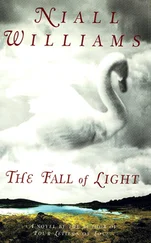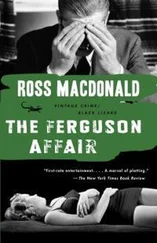All Communist regimes everywhere, without exception, were merciless in their treatment of “class enemies,” from the North Korea of the Kims to the Vietnam of Ho Chi Minh, from the Ethiopia of Mengistu Haile Mariam to the Angola of Agostinho Neto. Pol Pot was the worst of them all, but even Castro’s Cuba was no workers’ paradise. And Communist regimes were aggressive, too, overtly invading country after country during the Cold War. Through which foreign cities did American tanks drive in 1956, when Soviet tanks crushed resistance in Budapest? In 1968, when Soviet armor rolled into Prague, U.S. tanks were in Saigon and Hue, their commanders little suspecting that within less than six months they would be defending those cities against a massive North Vietnamese offensive. Did South Korea invade North Korea? Did South Vietnam invade North Vietnam?
Moreover, we now know from the secret documents brought to the West by Vasili Mitrokhin just how extensive and ruthless the KGB’s system of international espionage and subversion was. 95In the global Cold War, inextricably entangled as it was with the fall of the European empires, the Soviet Union nearly always made the first move, leaving the United States to retaliate where it could. 96That retaliation took many ugly forms, no doubt. Graham Greene had it right when he mocked The Quiet American, whose talk of a “third force” sounded just like imperialism to everyone else. But in terms of both economic growth and political freedom, it was always better for ordinary people and their children if the United States won. The burden of proof is therefore on the critics of U.S. policy to show that a policy of nonintervention — of the sort that had been adopted by the Western powers when the Soviet Union, Nazi Germany, and fascist Italy took sides in the Spanish Civil War, and again when the Germans demanded the breakup of Czechoslovakia — would have produced better results. As Kissinger pointed out to Oriana Fallaci, “the history of things that didn’t happen” needs to be considered before we may pass any judgment on the history of things that did happen. We need to consider not only the consequences of what American governments did during the Cold War, but also the probable consequences of the different foreign policies that might have been adopted.
What if the United States had never adopted George Kennan’s policy of containment but had opted again for isolationism after 1945? What, conversely, if the United States had adopted a more aggressive strategy aimed at “rolling back” Soviet gains, at the risk of precipitating a nuclear war? Both alternatives had their advocates at the time, just as there were advocates of both less and more forceful policies during Kissinger’s time in office. Anyone who presumes to condemn what decision makers did in this or that location must be able to argue plausibly that their preferred alternative policy would have had fewer American and non-American casualties and no large negative second-order effects in other parts of the world. In particular, arguments that focus on loss of life in strategically marginal countries — and there is no other way of describing Argentina, Bangladesh, Cambodia, Chile, Cyprus, and East Timor — must be tested against this question: how, in each case, would an alternative decision have affected U.S. relations with strategically important countries like the Soviet Union, China, and the major Western European powers? For, as Kissinger himself once observed, the statesman is not like a judge, who can treat each individual case on its merits. The maker of grand strategy in the Cold War had to consider all cases simultaneously in the context of a prolonged struggle against a hostile and heavily armed rival.
From this standpoint, the real puzzle of the Cold War is why it took so long for the United States to win it. Far wealthier than the Soviet Union by any measure (according to the best available estimates, the Soviet economy was on average less than two-fifths the size of the American throughout), technologically nearly always in front, and with a markedly more attractive political system and popular culture, the United States on the eve of Henry Kissinger’s appointment as national security adviser was already a mighty empire — but an “empire by invitation” rather than imposition. 97American service personnel were stationed in sixty-four countries. 98The United States had treaties of alliance with no fewer than forty-eight of them. 99Not only were American forces generally better armed than anyone else; the United States was not afraid to use them. Between 1946 and 1965, according to one estimate, there had been 168 separate instances of American armed intervention overseas. 100U.S. forces were permanently based in key countries, including the two major aggressors of World War II, Germany and Japan. Yet the Cold War was set to endure for another twenty years. Moreover, throughout the era of superpower rivalry, the United States tended to have a harder time than its rival when it came to imposing its will outside its own borders. According to one assessment of seven Cold War interventions by the United States, only four were successful in the sense of establishing stable democratic systems: West Germany and Japan after World War II, and Grenada and Panama in the 1980s. Even if the list is expanded to include the striking success of South Korea, the colossal failure of Vietnam hangs like a cloud of acrid smoke over the American record. 101
In the summer of 1947, George Kennan published his anonymous essay in Foreign Affairs, “The Sources of Soviet Conduct,” one of the foundational texts of the strategy he called “containment.” In a startling passage, Kennan likened the seeming power of the Soviet Union to that of the grand merchant family in Thomas Mann’s novel Buddenbrooks .
Observing that human institutions often show the greatest outward brilliance at a moment when inner decay is in reality farthest advanced, [Mann] compared the Buddenbrook family, in the days of its greatest glamour, to one of those stars whose light shines most brightly on this world when in reality it has long since ceased to exist. And who can say with assurance that the strong light still cast by the Kremlin on the dissatisfied peoples of the western world is not the powerful afterglow of a constellation which is in actuality on the wane?… [T]he possibility remains… that Soviet power… bears within it the seeds of its own decay, and that the sprouting of these seeds is well advanced. 102
Kennan was forty-three when he wrote those words. He was eighty-seven when the Soviet Union was finally dissolved in December 1991.
Why was this? Why was the Cold War so interminable and so intractable? A large part of the interest of this book lies in the fact that, by rejecting both historical materialism and economic determinism from an early stage of his career, Henry Kissinger was able to offer a compelling answer to that question. The Cold War was not about economics. It was not even about nuclear stockpiles, much less tank divisions. It was primarily about ideals.
VII
Was Kissinger, as nearly all his critics assume, really a realist? The answer matters a good deal. For if he was not in fact a latter-day Metternich or Bismarck, then his conduct as a policy maker ought not to be judged by the standard realist criterion: were American interests best served, regardless of the means employed? “Realism,” Robert Kaplan has written, “is about the ultimate moral ambition in foreign policy: the avoidance of war through a favorable balance of power…. [A]s a European-style realist, Kissinger has thought more about morality and ethics than most self-styled moralists.” 103Like Mazlish’s skeptical allusion to Kissinger’s “higher moral purposes,” 104this is closer to the target than the wild accusations of amorality and immorality favored by the conspiracy theorists, though it is still wide of the bull’s-eye.
Читать дальше











